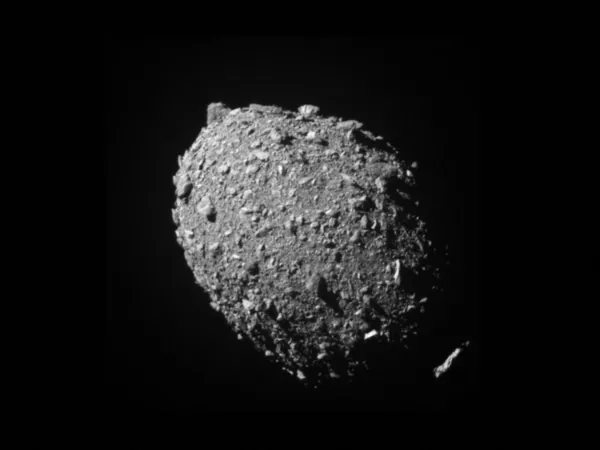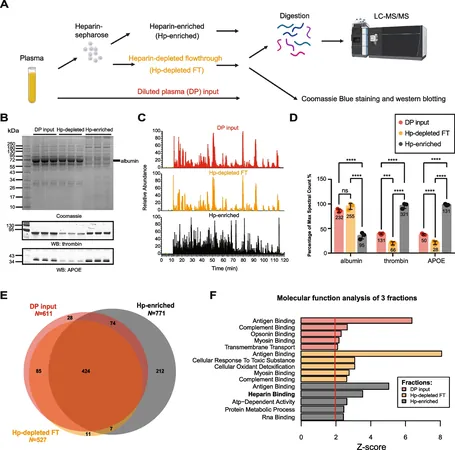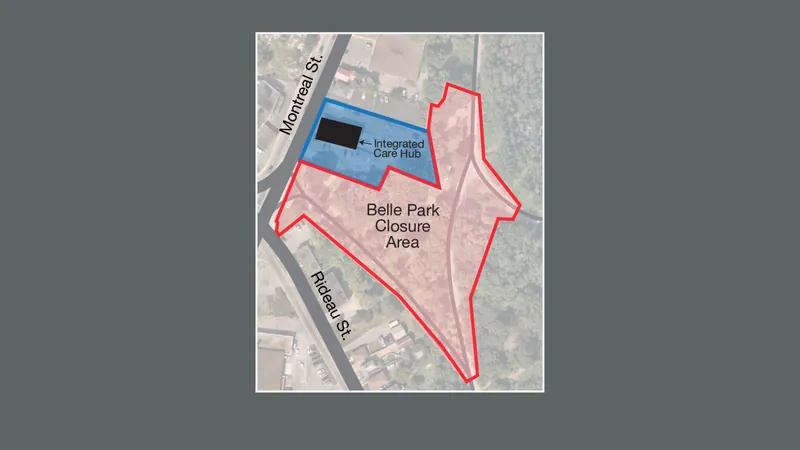
Spacecraft Launches to Investigate Asteroid Collision: What Scientists Hope to Discover
2024-10-07
Author: William
CAPE CANAVERAL, Fla. — In an exciting development for planetary defense, the European Space Agency's Hera spacecraft has launched on a mission to gather critical data about an asteroid collision that could one day inform how we protect our planet from potential threats in space.
Blast off from Cape Canaveral occurred Monday, marking the beginning of a two-year journey for Hera, the second half of NASA and ESA's bold planetary defense test. This mission comes two years after NASA’s Double Asteroid Redirection Test (DART) successfully altered the orbit of the asteroid Dimorphos by crashing into it. This groundbreaking experiment demonstrated that it's possible to change the trajectory of a dangerous asteroid if detected early enough, a vital capability should Earth ever face a foreseeable threat from space.
Experts are eager to scrutinize the aftermath of DART's impact and learn how effectively it altered Dimorphos. “The more detailed information we can collect, the better we can prepare for future scenarios where we might need to deflect an asteroid,” stated Derek Richardson, an astronomer from the University of Maryland involved in the DART mission.
Hera's Scientific Mission
Hera is equipped with a dozen scientific instruments and is set to make a significant difference in our understanding of asteroid dynamics. Scientists are particularly curious if the 150-meter asteroid experienced any dramatic reshaping or left a visible crater. Originally resembling a flying saucer, it may now take on a more kidney bean-like form following DART's impact.
The DART spacecraft’s collision propelled debris into space, creating a spectacular tail that extended over 10,000 kilometers. While the DART mission was a success, there remains uncertainty about the environment Hera will encounter. Flight director Ignacio Tanco expressed cautious optimism, noting, “We don’t fully understand the conditions around this asteroid, which makes this investigation all the more essential.”
Crash Scene Investigation
European officials are referring to Hera’s mission as a “crash scene investigation,” drawing parallels to forensic science aimed at understanding past events. Project manager Ian Carnelli emphasized the importance of collecting comprehensive scientific and technical data from the scene.
After a flyby of Mars for a gravity assist in 2025, Hera is projected to reach Dimorphos by the end of 2026, positioned approximately 195 million kilometers from Earth. The mission entails detailed observations over at least six months to analyze the moonlet's mass, shape, composition, and its new orbit around its larger counterpart, Didymos.
Exploration by Cubesats
Hera will also deploy two smaller Cubesats for closer exploration. One of these Cubesats will utilize radar technology to probe beneath the moonlet's rocky surface, aiming to confirm theories about its origins from material ejected by Didymos.
NASA’s Cautious Approach
Despite the dramatic nature of these missions, NASA has chosen these particular asteroids because they do not pose any threat to our planet. They serve as ideal candidates for this pioneering demonstration of asteroid deflection.
Overall, our solar system, which contains over 36,000 near-Earth objects, remains a frontier of scientific discovery. With more than 2,400 of these classified as potential hazards, initiatives like the Hera mission underscore humanity's proactive stance toward safeguarding our planet from the cosmos. The lessons learned from this investigation have the potential to shape our approach to future asteroid threats significantly, turning science fiction scenarios into practical realities.
Conclusion
Stay tuned as we continue to follow Hera's journey and the groundbreaking advancements in planetary defense that could protect us from cosmic dangers!









 Brasil (PT)
Brasil (PT)
 Canada (EN)
Canada (EN)
 Chile (ES)
Chile (ES)
 España (ES)
España (ES)
 France (FR)
France (FR)
 Hong Kong (EN)
Hong Kong (EN)
 Italia (IT)
Italia (IT)
 日本 (JA)
日本 (JA)
 Magyarország (HU)
Magyarország (HU)
 Norge (NO)
Norge (NO)
 Polska (PL)
Polska (PL)
 Schweiz (DE)
Schweiz (DE)
 Singapore (EN)
Singapore (EN)
 Sverige (SV)
Sverige (SV)
 Suomi (FI)
Suomi (FI)
 Türkiye (TR)
Türkiye (TR)